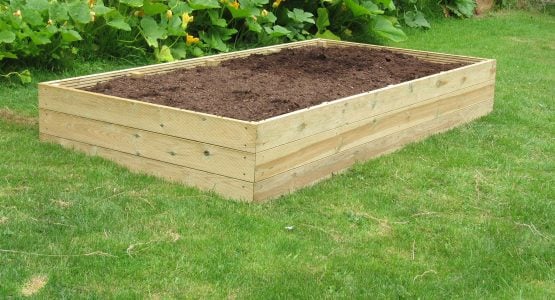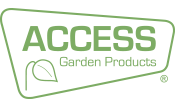Growing with Raised Beds

Growing with raised beds helps produce earlier crops and allows the soil to be improved in terms of nutrients and drainage. Timber raised bed kits from Access make the job of installing the beds much easier.
January and February are an ideal time to add raised beds to the garden, as everything is dormant, and there aren’t many other jobs to be done.
Before installing the raised beds, the ground needs to be cleared and the site levelled. If you want to have a row of raised beds you might like to put a gravel path between them. If you are going to do this put weed suppressant matting down where the paths will be before you fit the bed – that way you can make sure the edges of the matting are trapped under the base of the bed.
Before assembling the bed be sure to treat the timber with a preservative – especially the corner posts, as these sit with the end grain facing upward. All of the timber supplied with an Access raised bed is pressure treated, but an extra treatment will extend the life even further. Once the raised bed has been constructed, place it in position and sort out the final levels.
Fill the beds with good quality top-soil and dig in plenty of organic material. If you have a number of raised beds, then large bulk bags of soil work or a loose soil delivery works out the best value.
Advantages
Growing with raised beds has a number of advantages. Maintenance of the beds is easier, especially if bending down is an issue! The soil in the beds also drains better as it is above the ground. Once the sun gets onto the raised beds, then they will warm up more quickly – giving an early spring boost to the crops. If the raised bed is paired with a glass Cold Frame then the sun’s heat will be trapped inside the frame, raising the soil temperature. Even in early January I have seen temperatures inside of over 25 degrees C (77 degrees F).
If growing with raised beds in a smaller garden, one way of providing lots of variety in a small space is to use Mel Bartholomew’s “Square Foot Gardening” book – this divides 4′ square raised beds into 16 one foot squares – perhaps 4 lettuce in one square, a tomato in another, radishes or carrots in another – Mel then gives advice on rotating the crops through the season.



